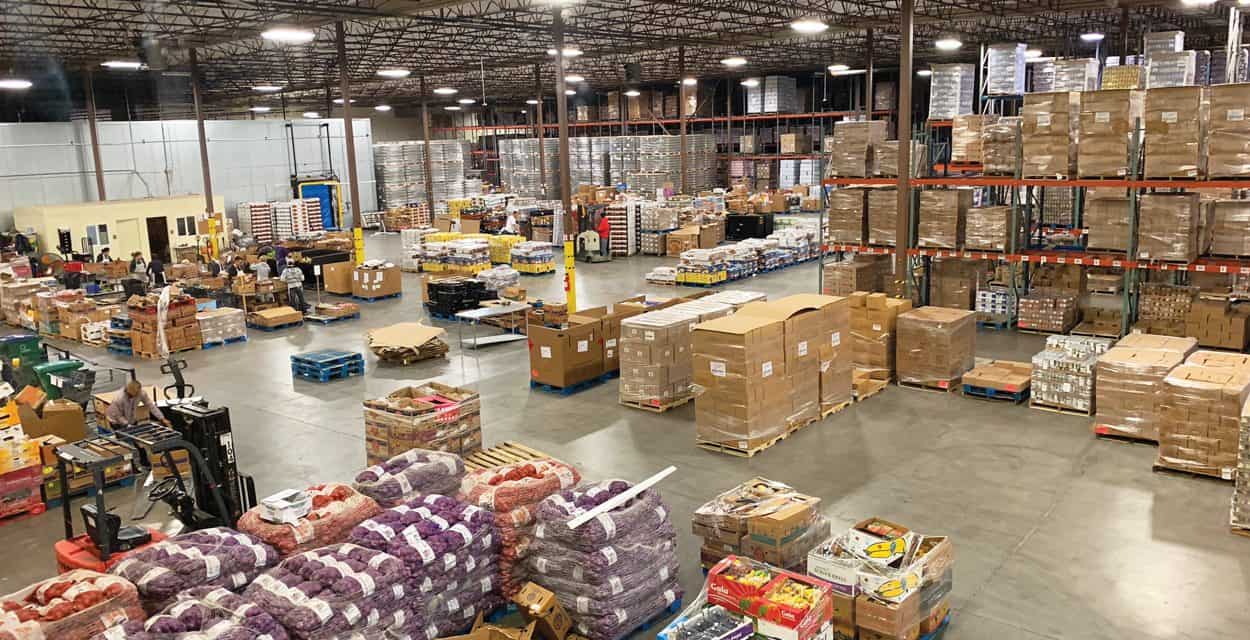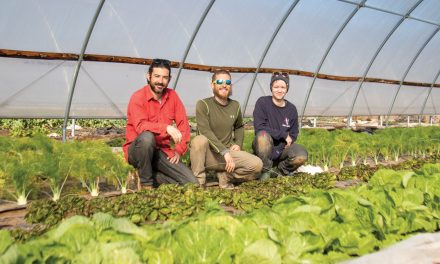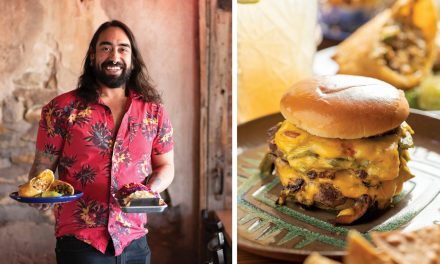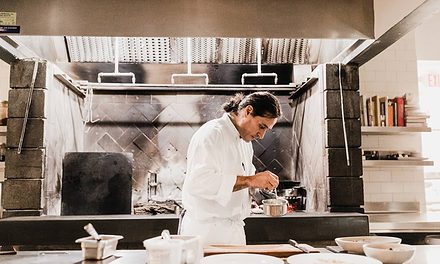Local Hero: Nonprofit
An Interview with Sonya Warwick, Director of Communications and Events

Roadrunner Food Bank warehouse in Albuquerque.
Photo courtesy of Roadrunner Food Bank.
Roadrunner Food Bank, a Feeding America member, is the largest nonprofit in the state dedicated to solving hunger. It serves as a distribution hub and provides food to hundreds of affiliated partners around New Mexico, including food pantries, soup kitchens, shelters, and regional food banks. Last year, the food bank distributed nearly sixty million pounds of food, significantly impacting people experiencing hunger.
One in four children and one in six people overall in New Mexico are at risk of hunger. How has the pandemic impacted these numbers?
In general, we are continuing to see a larger number of people seeking food assistance this year, and based on economic studies, we don’t expect it to return to pre-pandemic levels for several years. Pre-pandemic 2019 historical hunger figures and 2021 hunger estimates based on the pandemic’s impact show that this trend is continuing.
2019 historical figures:
- 1 in 7 overall (298,030, or 14.2 percent)
- 1 in 5 children (104,080, or 22 percent)
- 2021 Project Pandemic figures:
- 1 in 6 overall (322,120, or 15.4 percent)
- 1 in 4 children (112,490, or 23.7 percent)
Your Food Rescue Program is the largest of its kind in New Mexico, providing millions of pounds of food each year that might otherwise go to landfills. Where does most of this rescued food come from?
Our Food Rescue Program brings in food from a variety of sources: grocery stores, food manufacturers, food distributors, wholesale clubs, growers, gardeners, farmers, and people hosting food drives. In addition, the food bank is part of a food cooperative network, where food banks across the country collaborate to source food, including fruits, vegetables, meats, dairy, canned goods, and more. Working through this cooperative helps us scale up the number of semi-truck loads we can bring in based on the food items’ longevity.
What might surprise readers about some of the food you rescue? How do you handle food that reaches you too late to be distributed for people to cook and eat?
All food received by the food bank is sorted through for quality, inventoried, and then prepped prior to distribution. Volunteers are key in helping prep food for distribution and are trained in food-safety practices from our warehouse team. Our warehouse team is trained in food safety and our quality assurance team works closely with our warehouse to handle food in the safest way possible.
Food that is no longer fit to consume is set aside for local farmers to pick up and use for their farms’ needs.

You work extensively to not only feed people experiencing hunger, but also to end hunger through initiatives such as job training and advocacy work. What are some top priorities for your advocacy work in 2022?
Our Second Chances Job Training Program provides internships and skill building for people who wish to retrain or expand their knowledge. Often, people in our Second Chances Program come to us when they have experienced difficulty securing employment. They may include nonviolent ex-offenders, those who have been on long-term unemployment, and veterans. Paid internships have allowed many people to obtain gainful, long-term employment. We also have an initiative called SeedCorps, an AmeriCorps program that provides a yearlong service opportunity for community members seeking to make a difference. The SeedCorps members focus on nutrition education to address the benefits of eating fresh fruits and vegetables, provide information and services to people struggling with poverty and hunger (including how to access services), increase and expand existing local resources beyond food assistance, and assist with community food distributions—especially during the pandemic, when so many communities continue to need additional food-distribution locations.
Our advocacy work focuses on obtaining additional food items in large-scale volumes. We also focus on programs that help people access food or combat poverty. For example, we operate a public benefits program to help people apply for SNAP (food stamps), LIHEAP (home-energy assistance), and other programs that can assist people in poverty. In addition, we are experiencing escalating food and transportation costs as the supply chain continues to impact food availability with longer lead times, significantly higher food costs for items we purchase, and higher freight costs to bring food to our distribution center. We continue to advocate for funding that will help us secure the additional food we need to provide through this ongoing health crisis.
How can concerned edible readers take part in alleviating hunger in New Mexico?
There are three ways we encourage the community to get involved: Giving Time, Giving Food, and Giving Funds. All three are crucial to our ability to continue to provide food to communities across the state. And if you are outside the Albuquerque community, reach out to us and we can connect you to a food partner in your area who needs much of the same—time, food, and funds.
Anything else you want to share with readers?
We are tremendously grateful for the investment in our mission by community members like you. In New Mexico, hunger impacts rural, tribal, and urban communities in different ways. Come learn more about how we work by taking a tour or meeting with a staff member (virtually or in person). Another excellent way to stay connected to us is through social media. Find us on Facebook, Instagram, Twitter, and YouTube.








